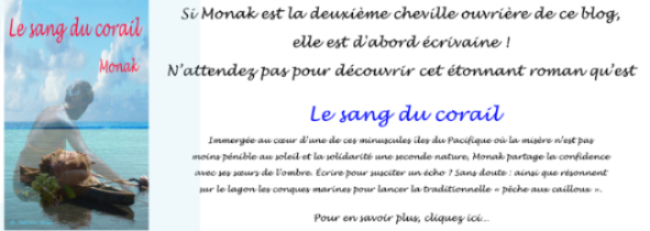 |
Historical heart of
Polynesia
As the cradle of Polynesian civilization, Raiatea is the biggest of the Leeward
Islands (The Western Society Islands). It holds the most beautiful and the most
important marae of Polynesia.
Between
Huahine and Bora Bora, 210 km (West-North-East) from Tahiti, Raiatea shares the
same lagoon with Taha’a
Island.
 |
| Raiatea and Taha’a: two islands within the same lagoon |
The sacred Island
is at the root in more ways than one. At first, for its central historic role
in the setting-up and the deployment of Ma’ohi people on all the archipelagoes
which now make up French Polynesia.
Then, and
above all, for its fundamental importance in the mythology and the Polynesian
traditional religion
Geography of the Sacred Island
Raiatea is one of
the three largest islands of French Polynesia. It has a population of just over
12 500 inhabitants (census of 2007).
Enclosed into the
same lagoon as Taha’a Island, the sacred island is overhung by several very steep summits among which
the highest peak, Mount Toomaru, is 1017 meters.
 |
| Dominating Uturoa, Mount Tapioi |
In the core of the island, Mount Temehani
shelters the emblem of the “sacred island”, a worldwide unique flower: the tiare apetahi.
The population is
rather fairly distributed on the edge of the island, that’s about hundred
kilometers.
The coastline,
jagged by deep and beautiful well protected bays, is fringed by lush vegetation.
A side road allows connecting
the bay Faatemu with the bay Faaroa, in passing down the impressive flanks of
the Mount Oropiro.
 |
| Uturoa, seen from Mount Tapioi |
Today, Raiatea
Island is the second Polynesian economic pole after Tahiti. We find the only hospital center and the only high school of the islands
beyond Tahiti. It also welcomes the main center of nautical tourism of the
whole Polynesian territory.
Raiatea Island and the history
This island of The Society Archipelago was chosen by the first
people to settle down, more than thousand years ago. As such, it’s considered
by all the Polynesians as the cradle of Ma’ohi civilization.
In raromatai,
the language of Leeward Islands, Raiatea was originally called Havai’i Nui,
what would mean approximately Big Gushing
Water.
Two years after Wallis discovered Tahiti in 1769, James Cook casts anchor in the bay of Uturoa, become the main harbor of the island.
 |
| The inside of a secret island |
At that time,
Raiatea and its neighbor Taha’a were submitted to ceaseless power reversals,
consequences of the fighting which the royal Tapoa and Tamatoa families led
against each other. The colonization is going to turn out at least delicate,
because enameled by fratricide wars.
At the end of the
18th century, the reigning families of Bora Bora take power on both islands.
But it will be necessary to wait for Tamatoa III’s reign, at the very beginning
of the 19th century, and see both islands of Raiatea and Taha’a, although enclosed
for a long time into the same lagoon, finally united.
 |
| Disproportionate the Port of Uturoa |
Converted to the Christianity, Tamatoa III
sets up a Code of missionary obedience. With its twenty five articles it’s applied on Raiatea from May 12th, 1820.
Then, it’s applied on all the Leeward Islands until 1866. This same year it’s
replaced by French code civil.
Tamatoa IV’s accession to the throne marks the seizure of power by Pomare royal
family. The situation doesn’t change any more until 1847. In that year, France
recognizes the independence of Leeward Islands.
But forty years
later, the annexation of the archipelago by Governor Lacascade causes a bloody
insurrectionary war which is going to last ten years.
.
Discover the Sacred Island
At first, from the urban area of
Uturoa, hike to the top of Mount Tapioi to discover a fabulous point of view on
Taha’a enclosed into the same lagoon.
Another walking
tour is imperative, even if it requires a full day and a guide. It leads to Mount
Temehani and allows the discovery of the emblem of the sacred island: the tiare
apetahi.
Raiatea, the sacred island
By car, the tour of
the sacred island allows you to discover a multitude of sites all more
surprising some than the others: wild and steep coasts or beaches of an
infinite sweetness. The whole splendor of Polynesia and its lagoons is yours to
find out, according to your mood and your desires!
This excursion couldn’t
do without some kilometers of cross road which connects the bay Faatemu with
the bay Faaroa by slipping at the foot of Mount Oropiro.
This day also owes
be interrupted by a long resting place on the site of marae* Taputapuatea, a
holy set between all and by far, the most impressing of all the Polynesian
marae.
The inescapable marae Taputapuatea
Around lagoon,
Raiatea will satisfy as much the scuba divers as sunbathers on magnificent motu
outstandingly preserved. Motu Oatara, as for it, will delight the bird lovers.
On the other side
of the reef, on ocean side, numerous very renowned surfing spots as well as
sites of deep diving along the falling of the coral reef are there to satisfy
the amateurs of strong sensations.
In half an hour only,
lagoon shuttles allow to surrender to Taha’a, the Vanilla Isle, enclosed into
the same lagoon.
 |
| From a bungalow of Hawaiki Nui hotel” |
From luxury hotels
to guest houses, numerous solutions of hosting spread around by the holy island
allow everyone to choose the ideal place as a dream stay.
The multi-daily air
connections with Tahiti, Bora Bora, Huahine and Tuamotu Archipelago make Raiatea
a magnificent moving plate to discover French Polynesia.
Lexicon:
*Marae: holy and religious site of the Polynesian
traditional religions
An article
of Julien Gué
Translated from French by Monak
Copyright
Julien Gué. Ask for the author’s agreement before any reproduction of the
text or the images on Internet or traditional press.











